Litochoro
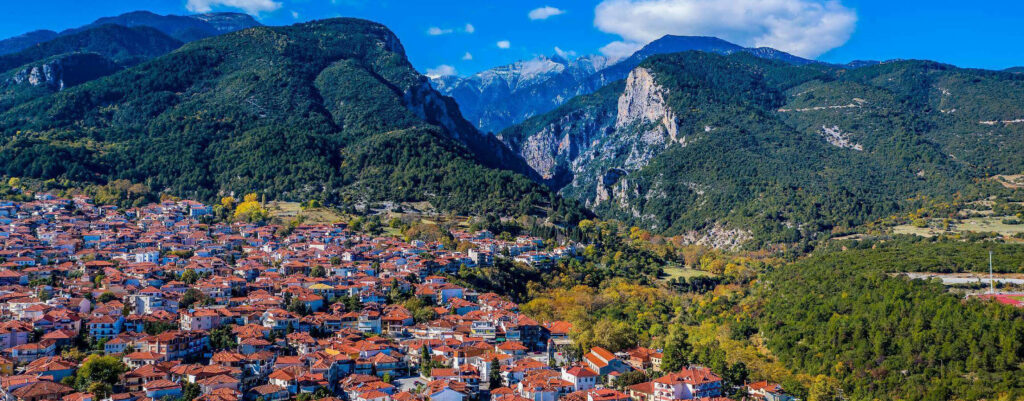
Litochoro is the big traditional settlement of northeast Olympus. It offers a harmonious combination of mountain and sea, historic tradition and traditional architecture with natural beauty. Litochoro, next to the gorge of river Enipeas, has all the contemporary infrastructure to serve the needs of its many visitors, and preserves the style of the old village and Macedonian architecture. Tradition has it that it was built by the people of the ancient neighbouring city of Pimpleia, after its destruction by the swollen river. Historic testimonies date the founding of the settlement to Byzantine times, in the 14th century; in the ensuing centuries, during the Turkish occupation, trade and shipping developed in Litochoro. The cultural and economic growth of the city is testified by the many churches and stone schools. Litochoro, although far from the sea, was a renowned shipping centre for centuries. The city that resides in the shadow of Olympus was a centre of national movements from the period of the Greek War of Independence to the National Resistance.
Agia Triada-Sparmos monastery
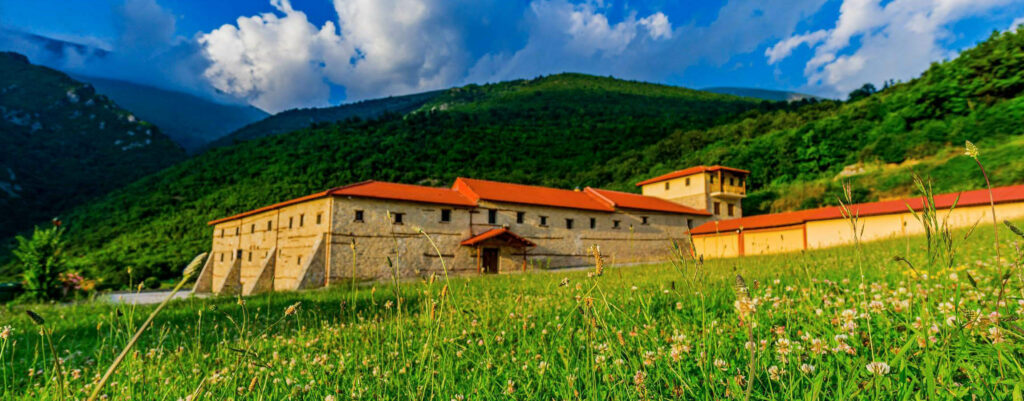
The Sparmou Monastery is situated on the slopes of Olympus and was built in the 16th century. In the 18th century it had about 150 monks and a huge estate. Its katholikon is a small aisleless basilica with a narthex dedicated to the Holy Trinity and adorned with lovely murals from the 19th century.
Valley of Tempi
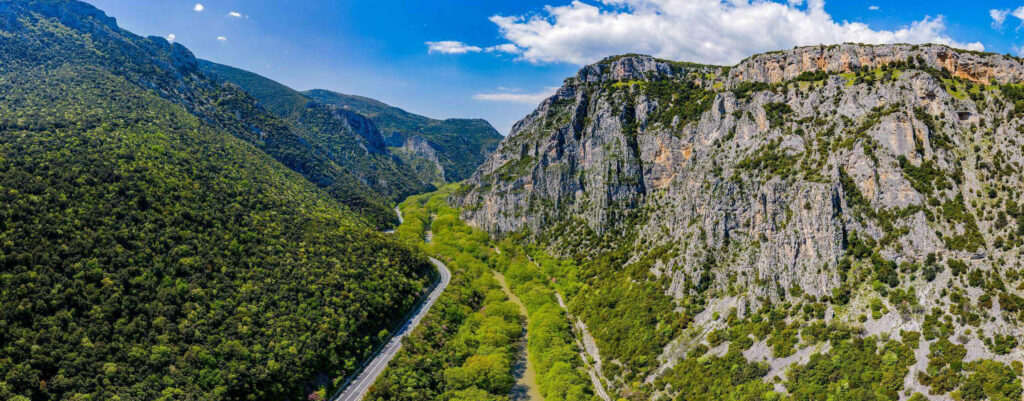
Even ancient Greek Gods were taken aback by its beauty. Between Mount Olympus and Kissavos, with River Pineios flowing through, the Vale of Tempe, which is 10km long, is an ode to the Mediterranean nature and it is easily accessible by car. Walking down the footbridge you will reach the waters of Pineios, just before the river empties them in the Aegean Sea. Cool off under the shadows of the riverside forest, which is full of plane, elm and willow trees, discover the beautiful flowers growing within the rocks of the canyon and watch rare bird species finding refugee in the dense vegetation. There is, also, the chapel of Agia Paraskevi and the cave with the holly water spring, both of which make Tempe a popular place for religious pilgrimage.
Mytikas peak
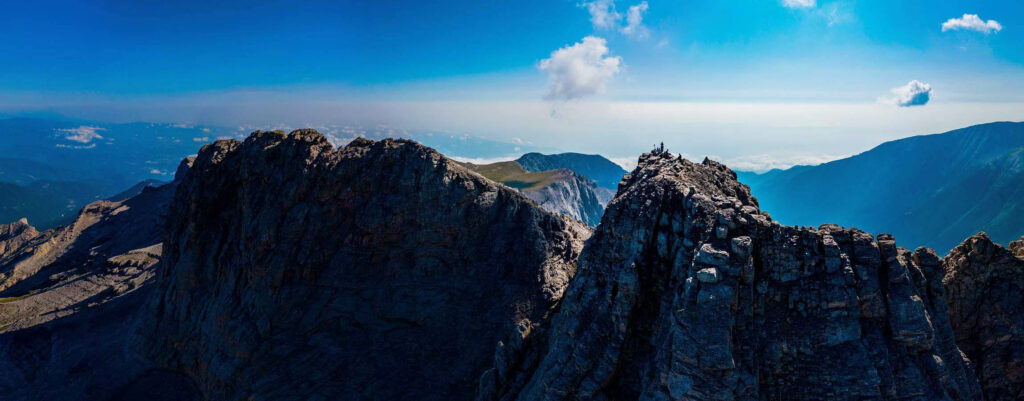
The highest summit of Greece, Mytikas or Pantheon. Climbing up to the top of the gods mountain (2,917-m) is not an easy task. In winter, when the mountain is covered with snow, it becomes even difficult for alpinists. The dream of each Olympus mountaineer is to get a photograph near the metallic Greek flag on the top. Mytikas was conquered on
August 2, 1913 by the Swiss Frederic Boissonas and Daniel Baud Bovy and their climbing mate Christos Kakalos, the veteran Olympus guide from Litochoro.
Profitis Elias peak
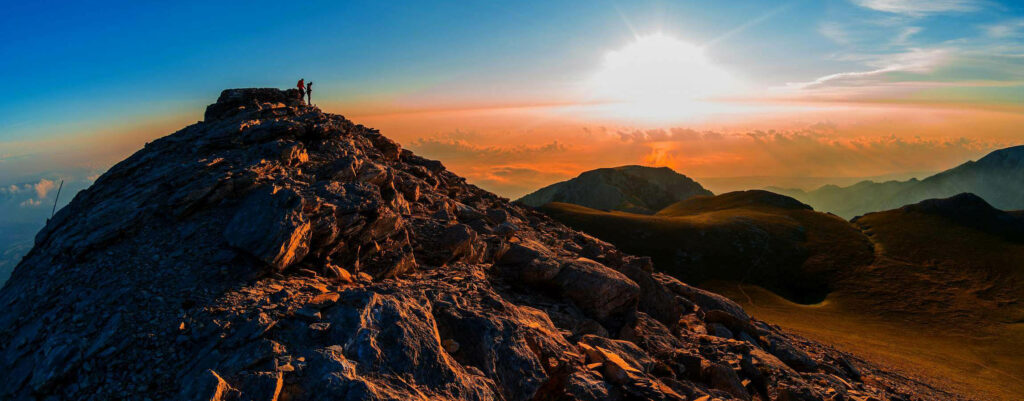
The highest worship place of Greece is the stone tabernacle of Profiti Elia on the so-called peak of Olympus, at 2.803m height. It is a small, one-space church which, according to the tradition, was built by St. Dionysus in the 16th century, and every July, on the celebration day of the Prophet, monks of the neighbouring monastery go up to the peak and have a Mass. Although no archaeological relics have been found, it is believed that the church was built on an ancient top sanctuary, as there was one on the opposite peak of St. Anthony.
Livadi
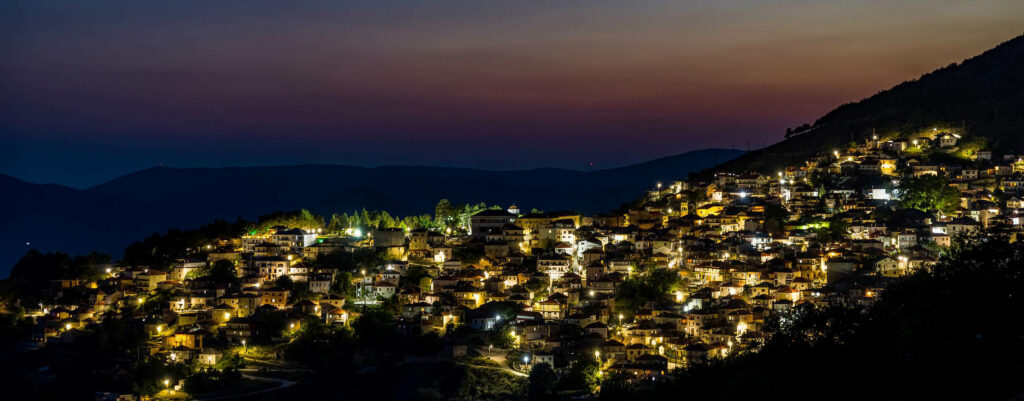
The historical village Livadi is located on the slopes of Titaros at an altitude of 1181m and is surrounded by the mountainsides of Pieria, Olympus and Komvounia. It overlooks the peaks and slopes of Olympus to the east, while its horizon extends to Koziakas to the south and west. The landscape is enchanting and extensive reforestations have been made in the area around the small town. Livadi was founded in the 17th century and witnessed great economic and intellectual growth in the 18th century. Its people took part in all the revolutionary movements in the region of Olympus.